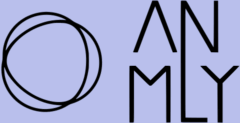FEATURED IN THIS FOLIO:
- T’kya Taylor and Joe Andrews
- Stephanie Lane Sutton
- Miriam Bird Greenberg
- Lix Z
- Jade Wallace
- Iris McCloughan
- Elana Lev Friedland
- CozCon
- Connor Wright
- C. A. Schaefer
- Barrett White
- B. Woods
- Antonius-Tin Bui
For the queer community, we code ourselves with our bodies when it has been dangerous to identify ourselves with words, and we code ourselves with our bodies in order to join a community that may exist as the only family structure that makes us feel safe. Until recently, we could find only a handful of models in popular culture to inform our own aesthetic choices, and so the very styles that we don operate as a patchwork quilt, collaged together with vintage and thrift store finds, sometimes high end pieces (perhaps on discount), our sister or mother’s lipstick, and our father’s neckties. All the mismatched bric-a-brac that makes up a person’s aesthetic where it is not easily found. I remember the time I was punished for fiddling with the gold combinations on my father’s briefcase (I’ll never regret my time spent with those glittering coils as they made music against my thumbs), just as well as I recall the time I sat with my mother and all of her many silk scarves and tied one after another around my neck, imagining they were my father’s neckties. I couldn’t imagine I’d own or wear my own someday.
Once, a poet (and my MFA thesis advisor) made an observation about my interest in the image that radically altered the way I approach dressing my body. In a letter, I had written one of the many types of rants I write to people I’m getting acquainted with for the first time about the experience of being a twin, how it informs the way I engage with the world, and the way my writing is shaped by the experience. It made sense to her that I would be singularly focused on the image because if the world sees my twin and me as the same, the only way we could distinguish ourselves from one another was how we looked upon the world.
Few statements about my twinning have been so memorable.
Although I had begun to cultivate a particular, protean, sartorial identity by then, I was less conscious of my choices surrounding what we typically think of as personal fashion: cosmetics, clothing, accessories, etc. I had not come out yet, not fully, to myself or to others in my life. I was on the brink of that discovery, that refusal to continue to hide what was so integral to who I was as a person. But that remark thrust me into an altogether different journey of self-presentation, propelling me forward in exploration of my own sexuality and gender expression, into their multitudinous layers and shifting identities.
What the poet said was true. My twin and I could distinguish ourselves through the unique ways in which we each gazed upon the world. But more than that, I realized that the sartorial choices I made in dressing my face and body could broadcast my personal identity to the world without a single word. This was true as someone who had been forced to wear the same thing as another person who bore my likeness well into my late teens, but I would come to discover that this was also true in a different sense for those who identify as queer.
These delightful, fierce, inimitable, and unapologetic contributions transcend the lines between genre just as we transcend the lines between gender, sexuality, aesthetic, and style. What we queers make of our bodies and community is how we insist on our own existence, then and now, especially in a world that works tirelessly to erase us, in small and large ways. The marvelous work included in this folio embraces all the layers of hybridity, just as we do. We are collages of our own making, in cut and line and color and seam and material and shade and skin and body. Sometimes, stitching ourselves to one another through the patterns our bodies make is all we have to get us through each year, each day, each moment.
Addie Tsai
December 2019
